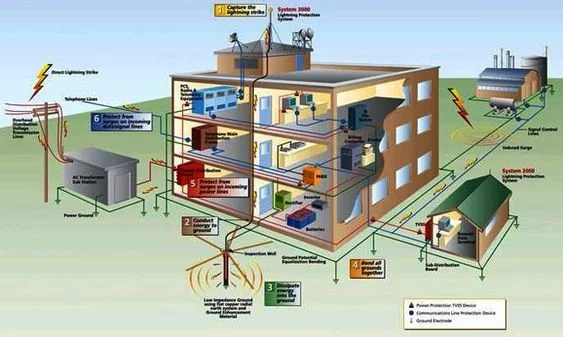Electrical earthing is the technique of directing the electrical flow’s instantaneous discharge straight to the ground. A low-resistance cable is used to facilitate this transmission. In reality, it is a setup that connects an electrical system to an earthing method. Although earthing can be utilised for practical purposes on occasion, it is often done for safety reasons. For telegraph lines, for instance, the earthing is employed as a conductor to avoid the expense of a return wire for a lengthy circuit.
A person might be injured by an electric shock as a result of touching a live metal element in an electrical installation if there is a failure and the installation lacks an earthing system. This is because electricity utilises the equipment’s body as a conduit to the earth. The purpose of earthing is to provide a fault current with a different route to travel to earth.
The galvanised iron is typically used for earthing. The leakage current may be reached easily by using earthing. The equipment’s short-circuit current is taken by the ground, which has no potential. Hence, earthing guards against potential harm to the system and machinery.
Earthing system: Purpose
In the case of a problem or malfunction, an earthing or grounding system’s goal is to offer a secure route for electrical current to travel to the earth. By doing this, the chance of electrical shock and fire is decreased.
An earthing system gives electrical circuits and equipment a point of reference so they may run at a safe voltage level in relation to the earth. By doing this, it is made sure that any electrical energy that the load does not consume is securely discharged to the ground.
By offering a low-impedance conduit for the electrical energy to go to the ground, the earthing system also shields machinery and buildings against overvoltage and lightning strikes.
Earthing system: Importance
In the case of a breakdown or failure, an earthing system, sometimes referred to as a grounding system, offers a secure route for electrical current to flow to the ground. This is important for the following reasons:
Earthing system: Types
For earthing and delivering the neutral of an electrical installation, there are five fundamental techniques.
TN-S earthing system
The supply transformer serves as a single point of connection in this approach between the supply neutral and ground. Neutral and earth protecting conductors are located separately in the supply cables (SNE). In essence, the earth conductor serves as a protective sheath, while the neutral conductor acts as a fourth “core”. The service cable’s sheath or a different earth conductor may be connected to the customer’s earth termination. Prior to the development of multiple protective earthing (PME or TN-C-S) systems, the TN-S approach was essentially the norm in the UK.
TN-C-S earthing system
The supply cables used in this manner feature a PVC covering over a neutral and earth metallic outer sheath combination. The PEN is the total neutral earth sheath (protective earth neutral). The neutral and earth would typically be separate and connected only at the service point in a TN-S supply within the customer’s premises. The system is TN-C when the neutral and earth are combined within the building.
PNB earthing system
A variant of the TN-C-S system known as “Protective Neutral Bonding” gives the customer access to an earth terminal that connects to the supply neutral. However, keep in mind that the neutral is only ever connected to earth in one place. One client with a transformer will be using this system.
TT earthing system
The supply is only earthed at one location in this system, but the cable sheaths and exposed metalwork of the customer’s installation are linked to the earth through a different electrode that is distinct from the supply electrode.
IT earthing system
This system has earthed exposed conductive components of the installation but no direct connection between live parts and the earth. To make the protection plan necessary to find the first earth fault simpler, a high impedance connection to the earth is occasionally offered.




